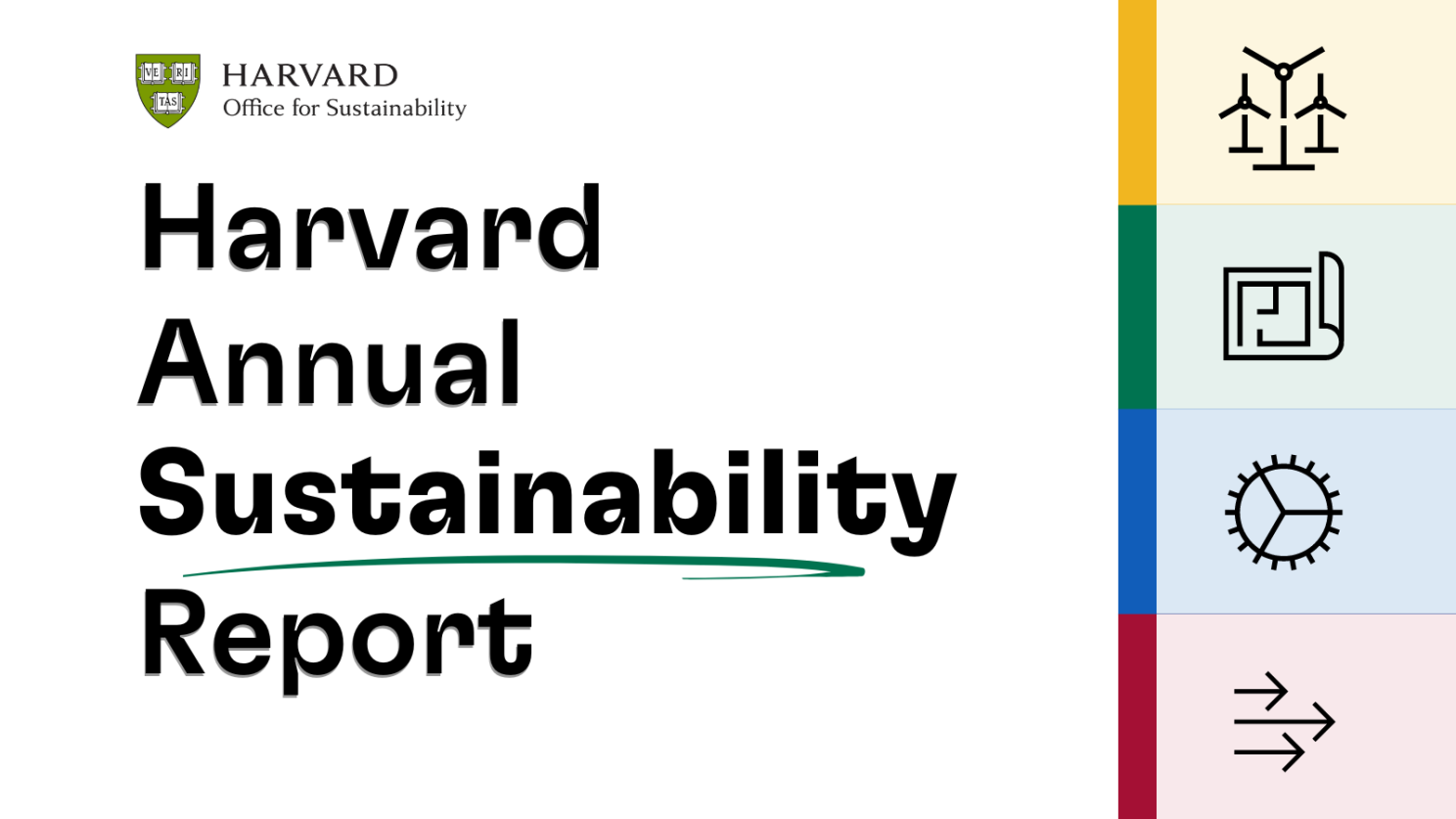Today Harvard released its Annual Sustainability Report for 2023-2024, which includes progress on goals related to climate, buildings, waste and water. The revamped report features new data and interactive visualizations, as well as stories of impactful initiatives happening across campus.
The Office for Sustainability works with faculty, students, staff, and alumni, using our urban campus as a testbed to translate research, knowledge and innovation into practice and pilot solutions to address climate change and sustainable development.
Below are highlights from the new annual report broken down by the four pillars in Harvard’s Sustainability Action Plan.
How We Power
– By 2026, Harvard will match 100% of its electricity emissions through the procurement of newly developed renewable electricity projects.
– Harvard is actively moving forward on its Goal Zero to achieve zero fossil fuels by 2050. Significant efforts are underway to further reduce energy use and recover energy, decarbonize heating, electrify buildings, and further reduce campus emissions, which have already been reduced by 40% per sq. ft. since 2006.
– Harvard has 3MW of solar photovoltaic (PV) on campus, the equivalent of 600 home installations.
– The University collaborates with government partners on climate regulations, aligning with leading sustainability practices.
– The University adheres to holistic sustainable building practices focused on climate, health, and equity. This includes innovative work for healthier materials and supply chains, better indoor air quality in buildings, and reduced operational and embodied carbon emissions.
How We Build
– Harvard now has 150 LEED-certified projects, two Passive House certifications, and numerous projects pursuing Living Building Challenge Core certification.
– Harvard’s Healthier Building Academy (HHBA) was developed to design, build, and operate healthier buildings by reducing “chemical classes of concern,” many derived from petrochemicals, including PFAS/forever chemicals and chemical flame retardants, which pose health risks throughout the supply chain. HHBA is now up to 14 product category requirements that seek to ensure supply chain purchases without some of the most harmful classes of chemicals.
How We Operate
– Harvard continues to innovate sustainability standards for its major operations, including buildings, landscaping, food, cleaning, and IT.
– The University is working on Scope 3 (supply chain) emissions reduction with goals for reduced embodied carbon in construction and food. Since 2019, Harvard has reduced its food-related emissions per-calorie by 18.5%.
– Harvard Transportation has already electrified one-third of its shuttle bus fleet and has added 10+ electric vehicles since 2021, including mail and utility trucks.
How We Lead
– The Salata Institute for Climate and Sustainability funds ambitious climate research clusters involving faculty across multiple disciplines.
– Harvard is a leader in sustainability in research and education: offering over 220 courses on climate and sustainability, 97 climate ventures incubated, and more than 100 student projects funded by the Office for Sustainability.
– Harvard is enhancing sustainability efforts through strategic, institutional partnerships with the Boston Green Ribbon Commission, the International Sustainable Campus Network (ISCN), the Association for the Advancement of Sustainability in Higher education (AASHE), and the Ivy+ Sustainability Collaborative.
To better understand Harvard’s strategic framework for action, see the University’s Sustainability Action Plan.





